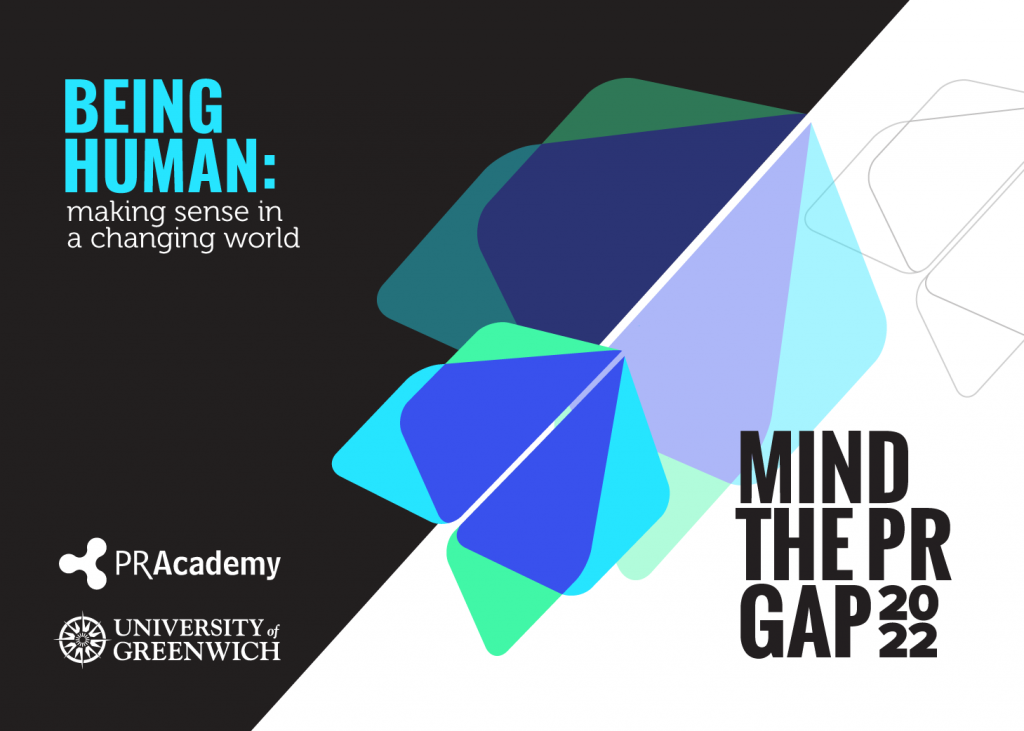Simon Collister to speak on brains and algorithms at Mind the PR Gap

About the author
Richard Bailey Hon FCIPR is editor of PR Academy's PR Place Insights. He teaches and assesses undergraduate, postgraduate and professional students.

Mind The PR Gap is a practitioner-academic conference. Here we preview the theme of one of the speakers – Dr Simon Collister from Unlimited’s Human Understanding Lab.
Tell us about your professional and academic background and your research interests.

I have a hybrid background, spanning academia and professional strategic communication and marketing consulting.
From an academic perspective my research has looked at the increasingly complex ecosystems of media and communications in today’s digital world.
Specifically I’m interested in the interactions between cultural and communicative aspects of communication, such as the language and imagery we use to persuade audiences, and also the material features and processes of media and communication. So for example, how does the digital infrastructure of social media affect the distribution and reception of information? Or how does AI-powered analysis of data shape our understanding of the issue we are trying to make sense of and convey to the world.
In my role as Director of Unlimited’s Human Understanding Lab I take some of this expertise – and more – into client work.
Within the ‘Lab’ we have a community of 120 neuro, behavioural and data scientists who we can deploy to undertake projects as diverse as testing humans emotional reactions to creative ideas or marketing assets through to predicting consumer behaviours and outcomes.
At the heart of all of this we use research to get to the heart of commercial or social problems by diving deep into the contexts, emotions and motivations that drive human behaviour.
The theme of Mind the PR Gap is ‘Being human: making sense in a changing world.’ Can you give a flavour of what you’ll be talking about at the conference?
I’m going to try to open up the landscape of what we usually think or do when it comes to communicating. So, as outlined above: too often when we think about what we are trying to communicate we tend to focus on the message, and the meaning we want to convey when we say things.
However, there are many more layers that we need to think about and take into account when we plan to communicate.
For example, increasingly there are digital layers of communication which impact our communicative success. One area much more widely acknowledged these days is the role that social media algorithms play in determining the visibility of our message or communicative content. Those who are aware of the general way these algorithms affect what we do, will know that often communication strategies need to adapt to include what I call ‘non-communicative’ elements – often a tactical action which, while not changing the core communicative message, is necessary to prime or ‘nudge’ a desirable outcome in the algorithm.
Linked to this is the idea that the technological layers of communication are designed to respond to ways in which we know our brains work. For instance: we know that emotions are a vital trigger for more effective communications. This is why social media algorithms, for example, are usually designed to optimise for emotive content which will lead to increased social sharing.
However, the human brain is another ‘material’ dimension to communications which I will explore. The human brain is key to our ability to think, feel and do – but all too often the way it operates and the way we can enhance our communications by taking into account this powerful tool is overlooked.
I’ll look at the ways in which we currently understand the ways in which the brain works to trigger certain behaviours or shapes our decisions based on cues and stimuli from the world around us.
Crucially, the majority of our decision-making process is subconscious – so ‘rational’ communications designed to persuade audiences into reputation or perception change; or drive brand consideration are starting in the wrong place.
Just like the social platforms algorithms, our brains are picking up cues and information from a wide range of signals, but unlike the commercially secret algorithms of Facebook and Google, neuroscience has helped us understand some of the ways we can plan communications more effectively.
Ultimately, I would argue that all of these different human, technological, communicative dimensions come together at the same time. By recognising that there is a human at the heart of them all enables us to be better and more effective communicators.
Can you point me to any background reading or other sources to support your arguments?
At the risk of being slightly self-referential I’d recommend the following as useful to articulating some of the key themes driving my talk:
Collister, S. and Roberts-Bowman, S. (2018) Visual Public Relations: Strategic Communication Beyond Text. Routledge, London.
Collister, S. (2015) ‘Algorithmic Public Relations: Materiality, Technology and Power in a Post-Hegemonic World.’ In L’Etang, J.; McKie, D., Snow, N. and Xifra, X. (eds.) The Routledge Handbook of Critical Public Relations. London: Routledge.
The great Robert Cialdini has also written a great book exploring some of the concepts I allude to: ‘Pre-Suasion: A Revolutionary Way to Influence and Persuade’
And Richard Thaler and Cass Sunstein’s classic, ‘Nudge’, is also relevant to help acknowledge and understand the role of subconscious decision-making in our everyday lives.